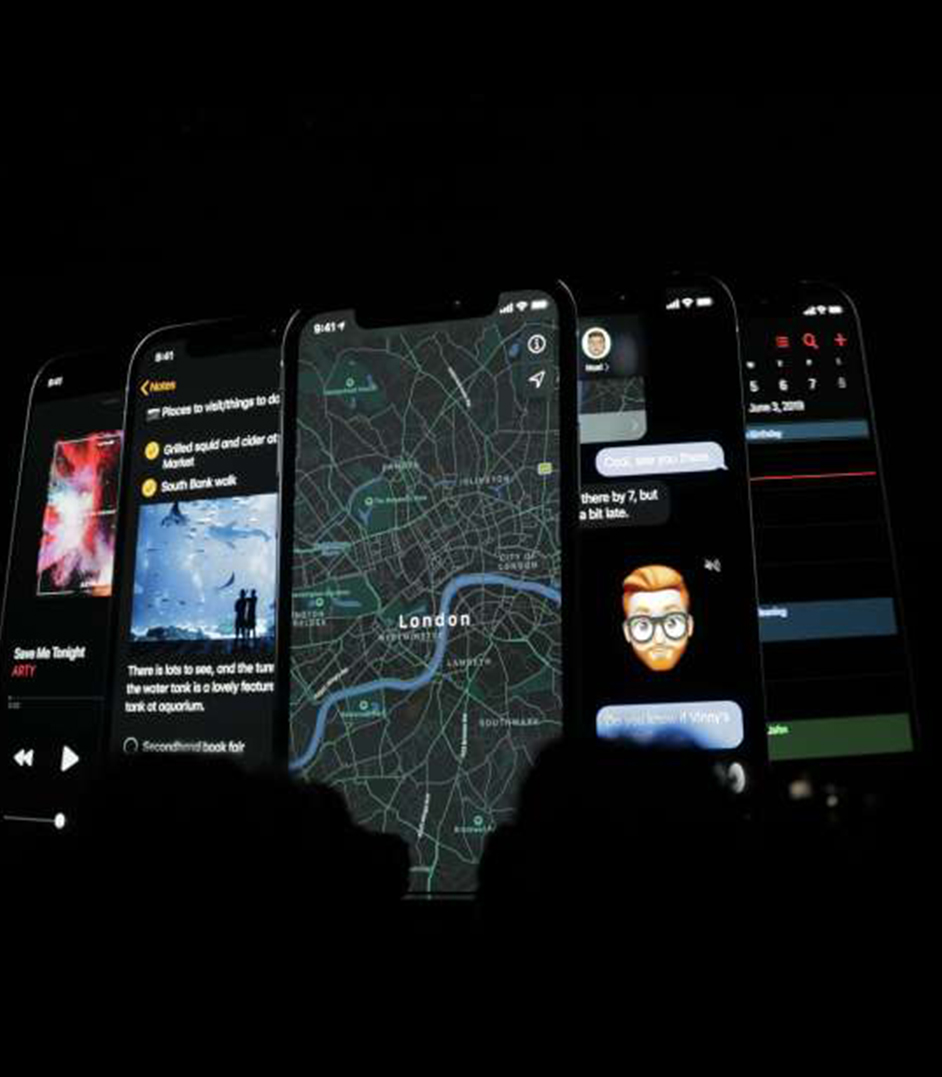
4 Most Important Web Design Principle Explained
Having a website is the need of the hour. With the trends changing and everything going online, it is important to make your presence felt across all the platforms. There was a time when people did business based on the ‘word of mouth’. It was the only promotion strategy people used to make their business more successful but nowadays, competition is tougher, and those who are stuck with old methods mostly fail in the race.
Online is the new trend now. People do shopping, buy clothes, jewellery, food, groceries, study materials and what not! But how? From where do they buy it? There are web portals or say websites that let people do whatever they want. These websites are platforms related to particular things that attract people towards them and increase their reach and engagement to earn and be more popular.

Anyone can make websites for any purpose they want to achieve. They can use it for social purpose, for e-commerce, blogging or any other thing they wish to start or to complete. But the biggest problem arises in making these websites. These websites are at the same time, easy and challenging both. For a person who is aware of web designing, it will be easy but still not a piece of cake, for web design takes more than just an idea. It takes proper planning, wise decisions and a good web designer. If any one of these factors goes missing, your website can turn into a blunder in no time.
Principles Explained
There have been a lot of researches on web designing. About what kind of websites do people like, what kind they feel is easy to use and which sites do they remember and prefer to visit again. There are some particular set of principles everyone follows while designing a website. Here in this blog, there are the four most important web design principles. Without these four factors, no site will be liked or visited by consumers who will lead directly to the loss of time, money and work. Take a look at these-
Principle No. 1- Uses and Gratification theory

This is not precisely a principle but a necessity while designing the website. Uses and gratification theory says that the site should be simple and can easily be used by consumers. What if you made a site for your business, but the reach is not increasing, the sale is not happening. What can be the reason? The reason may be that the user is unable to find options and hence find the alternative that is more easy to use. The sale is never going to increase, and no user would recommend your website to other people for using or visiting. This negative review will make your business go wrong, and this is why, it is important to keep in mind, about the uses and gratification theory.
Simplicity is the basic of everything. Every user is not a computer geek, or some don’t even have basic knowledge of sites thus making it easy is the only option. Clutter-free design requires only meaningful interactions and less effort from the user to achieve satisfactory results. If you need an idea, visit pages on google and try to use them. There are many sites which are a piece of cake and recommended by most of the people, but there are somewhere you won’t be able to find options you’re looking for, hence you return to find any alternative, and this is bad from the perspective of business and goal intend to reach.
Principle No 2- Content

Content is the king- you must’ve heard this phrase so many times. No website is complete without the content or says a little piece of information. Always keep the matter easy to read, the sentences should be short and crisp for people do not treat hard copy and web content as same. Keep in mind that subheads should always be present for it makes the information easy to scan via eyes. Consumers always read what they want to and they keep searching for it till they find it. The readability should be high and the language used should be of class twelfth so that everyone can understand it. Everything on a site is related to the content or say communication. For every click, every button, every piece available is making you interact with your consumer or audience. It is up to you for which language do you choose to display. Keep in mind to keep your audience instructed before they fill the form or buy an item or ask a query. The set of rules and instructions should be displayed next to or before filling the form or making a purchase so the consumer can understand what they’re getting into.
If you have a shopping website, give a little description of every product that displays. Make a blog of rules or one of explaining the rules or about uses of certain products so that people can find it easy to purchase and visit the website regularly for more information or buy some product if they find it useful. The content should care. It should look human and not like a robotic app. Like at times, when people opt for the payment options, a little video link pops-up with the tutorial written over it. If felt like, the consumer will take a look at it and try to accordingly so as to save any mishap from occurring because everyone cares about their money. And communication is useful when people will feel like that website cares about it too.
Principle No 3- Maintain Equilibrium

The website when in the design phase, should always retain its balance or say consistency. No matter which platform you choose, the visual style of the app should be same. Going through different web designs on the Internet, you’ll find that the whole look and feel of the website remains same; uniform. From home page to different options, the pricing, careers page to blog everything remains consistent.
Consistency pleases the eye of the visitor and attracts more people to scroll through the platform, and at many times it plays a big role in pursuing consumers t buy the product. It may happen that the way you choose is conventional, but people will be aware of what they’re doing instead of just clicking on the option that leads to some other information. The user gets frustrated then. Typical conventions help in keeping the usability standard of the website and product high.
Maintaining consistency makes the site look professional and gives a chance to explore more. The colour palette should be decided beforehand, and it should remain the same throughout. If not, the web design will look funny, and it will hurt the eyes of users too. The colours should make the eyes feel warm and happy, and it will ultimately lead to browsing more on the site. People should love buying the product and should feel glad to be related to your product and name. This leads to word of mouth.
Principle No 4- Visual Appeal

If the upper principles are kept in mind, you’re halfway there to create a good design for your website. A good design is not complete without images and colours. We have already studied a bit of the colour, but it is not enough. It takes a lot of time and pressure to just decide which colour is to go by. The website is visual medium and consumer prefers everything on the net to be pleasing the eyes. Colours invoke emotions and same colours and create different emotions when used in different contexts. For the starters, always avoid the heavy dose of corporate black as it makes something look like gothic or emo. Keep the site as vibrant and warm as it gets. But if you’re making a portfolio of a rock band or something very unprofessional, corporate black is acceptable. The colour should be consistent and should not be used more than needed or it will make the design heavy. Our goal should be to make it neat and clean, and for this white space is necessary. Also, you’ll need to create space for advertisement displays as they also help in increasing the reach and let you earn some traffic and money. White space is a space given blank on the screen that gives neat look to the display.
Even if you’re moving to a darker design from the light one always maintain contrast. Contrast makes the image of product pop out of the page and attracts the attention more. Here are some points to keep in mind-
- Abide all the image rules- Never steal the images but always give credits to whoever it’s needed and follow all of the stock images rule.
- Always keep the file size small- to stop the website from hanging or taking a lot of time for reloading, always prefer to keep the image file size small so that it will be easy for the site to load and the consumer does not lose all the patience.
- Make your website colour-blind friendly- A total of 5% of the men suffer colour blindness, but that does not mean that they do not use these websites. Use the colours that would be helpful in every case.
- Keep movement less- It is nice to add the image that moves. They give a cool look to the website but adding these too much, ruin everything. Keep in mind to make your page stable and do not give it a shaky- jerky feeling. No one wants to tire his or her eyes.
- Choose images carefully- People look at images first to understand what everything is about. Always remember to put up good images, happy images so the mood of the consumer can brighten up.
Conclusion
It takes a lot more than just these 4 principles to build a website. But these 4 principles are the most important ones that play a key role in building a website. Every point help each other hand in hand like usefulness and content support each other and all of this is backed by colours and images but at the same time, it should all be consistent and stable giving it a sophisticated look.
Everything is inter-connected to each other. Website building takes a lot of prior planning. There are various tutorials available on how to design these web pages but in reality, it is far more difficult. There are many agencies that help in building these web pages with the help of their professionals and also maintain it all along. The other key points are to name website, decide the purpose, hiring writers to create proper content for the page, making it official.
The competition is high in the market and it is important to be on top of the game to achieve the goal set or the website and your idea will be lost in between the sea of websites that no one knows about. The internet is a big place and the competition is not only from local sites but all those contemporaries site that is in the market. These sites can be a nation, local or international both.


